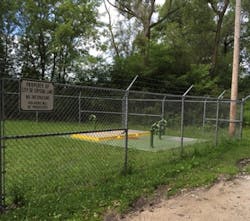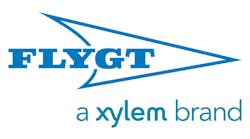Crystal Lake, Ill., is a city in McHenry County. Named after Crystal Lake – a lake located 1.6 miles west-southwest of downtown – the city is about 45 miles northwest of Chicago, and it has a population of approximately 40,000. The southeast portion of the Crystal Lake shore was first made available to the public for general recreational use in 1856.
The Crystal Lake Wastewater Treatment Division is responsible for the operation and maintenance of two wastewater treatment facilities. Combined, the facilities process an average of 4.3 mgd, or 1.6 billion gal annually. This produces an effluent that not only meets, but also often outperforms the National Pollution Discharge Elimination Systems (NPDES) permit requirements. Other functions of the division include laboratory analysis of samples required for NPDES reporting, plant process control, industrial monitoring and potable water analysis.
In 2000, both Wastewater Treatment Plant #2 and Wastewater Treatment Plant #3 underwent a $15-million expansion project that increased their combined capacity sufficiently to serve the city until 2020.
Crystal Lake has 27 sanitary stations and three storm water stations. This includes more than 65 pumps, some of which were installed in the late 1980s. Each of these stations is subject to routine inspections to ensure its proper operation and maintenance. A comprehensive review of each operating system is conducted to assure uninterrupted operation. As part of the city’s minor capital improvement process, lift stations are renovated and updated prior to the equipment reaching the end of its service life. Updated technology is installed to maximize efficiency and prevent system failures.
Scope
Sanitary Lift Station 13 had experienced occasional clogging problems for a few years. The station had high visibility with the city because of its occasional operating issues. As a satisfied owner of more than 40 submersible pumps using both programmable logic controllers (PLCs) and SCADA, Crystal Lake turned to Xylem for a solution.
Faced with the occasional blockage problems at Lift 13 due to flows containing flushable wipes and miscellaneous debris, the city was recommended the new Xylem Concertor, a fully integrated system with high operational flexibility. Concertor combines a fully integrated control system with IE4 motor efficiency, adaptive N-hydraulics and intelligent functionalities.
By integrating a control system that can automatically adapt to the changing wastewater environment, an optimal level of performance is delivered while significantly reducing total cost of ownership. The built-in intelligence makes it quicker and easier to set up and operate functions that would otherwise require a very sophisticated monitoring and control system – all with a significantly smaller footprint.
Solution
The Concertor system was installed and began operation in July 2015. During installation, the city would not allow modification to the existing control panel. The existing motor starter and pump protection had to remain in place in the event the old pump had to be reinstalled. Concertor does not require these items to operate, so slight modifications were required to make it work with the existing station controls. Regardless, installation was smooth, and it took only a few hours to install the pump and control. No consulting engineering firm was used. The Flygt Eng. Group sized the new system based on information provided by Crystal Lake.
Results
Since installation, inspections have revealed very little sediment and grit build up. Also, varying start levels have prevented grease ring build up in the station, a great benefit. Crystal Lake staff previously performed the onerous task of station clean out every three to four months. The new system did not require clean out for eight months. The city estimates that the cost of two workers, two hours of work, and the rental of a vacuum truck to be $800 to $1,000. You do the math. Finally, all clogging issues have been eliminated.
Crystal Lake was able to parlay a long-term solid relationship with a major pump manufacturer into a clogging solution for one pump station, cost-saving standardization and reduced inventory across its remaining pump stations, and significant energy savings.
Editor's Note: Scranton Gillette Communications and the SGC Water Group are not liable for the accuracy, efficacy and validity of the claims made in this piece. The views expressed in this content do not reflect the position of the editorial teams of Water & Wastes Digest, Water Quality Products and Storm Water Solutions.


